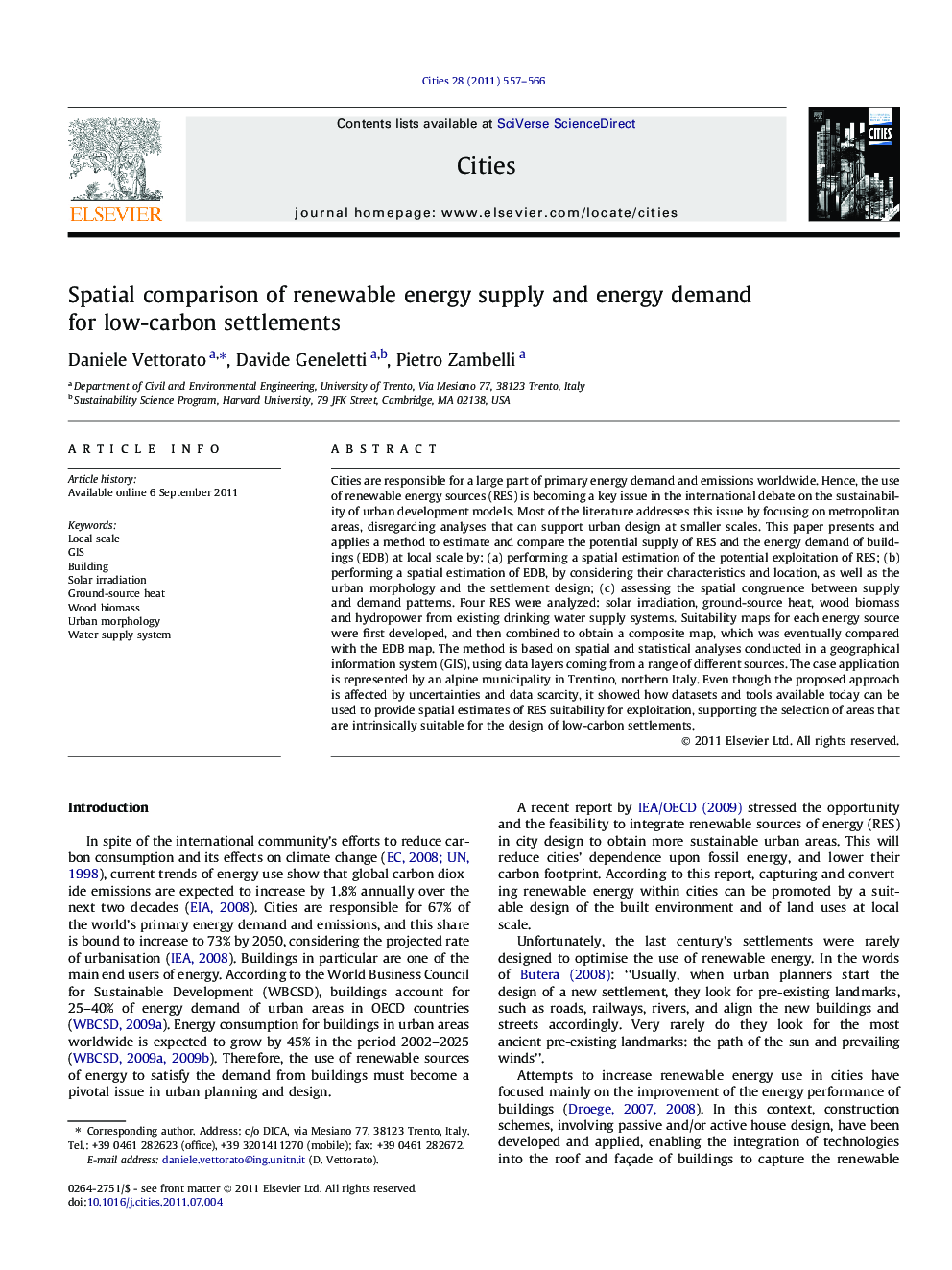| کد مقاله | کد نشریه | سال انتشار | مقاله انگلیسی | نسخه تمام متن |
|---|---|---|---|---|
| 1008704 | 938588 | 2011 | 10 صفحه PDF | دانلود رایگان |

Cities are responsible for a large part of primary energy demand and emissions worldwide. Hence, the use of renewable energy sources (RES) is becoming a key issue in the international debate on the sustainability of urban development models. Most of the literature addresses this issue by focusing on metropolitan areas, disregarding analyses that can support urban design at smaller scales. This paper presents and applies a method to estimate and compare the potential supply of RES and the energy demand of buildings (EDB) at local scale by: (a) performing a spatial estimation of the potential exploitation of RES; (b) performing a spatial estimation of EDB, by considering their characteristics and location, as well as the urban morphology and the settlement design; (c) assessing the spatial congruence between supply and demand patterns. Four RES were analyzed: solar irradiation, ground-source heat, wood biomass and hydropower from existing drinking water supply systems. Suitability maps for each energy source were first developed, and then combined to obtain a composite map, which was eventually compared with the EDB map. The method is based on spatial and statistical analyses conducted in a geographical information system (GIS), using data layers coming from a range of different sources. The case application is represented by an alpine municipality in Trentino, northern Italy. Even though the proposed approach is affected by uncertainties and data scarcity, it showed how datasets and tools available today can be used to provide spatial estimates of RES suitability for exploitation, supporting the selection of areas that are intrinsically suitable for the design of low-carbon settlements.
► We perform a spatial comparison between renewable energy sources (RES) and energy demand of buildings (EDB).
► We demonstrate that spatial estimation of RES supply can be performed at local scale.
► Estimation of EDB requires analysis of terrain and urban morphology.
► Comparison of RES supply and EDB is a key issue for low-carbon settlements.
Journal: Cities - Volume 28, Issue 6, December 2011, Pages 557–566